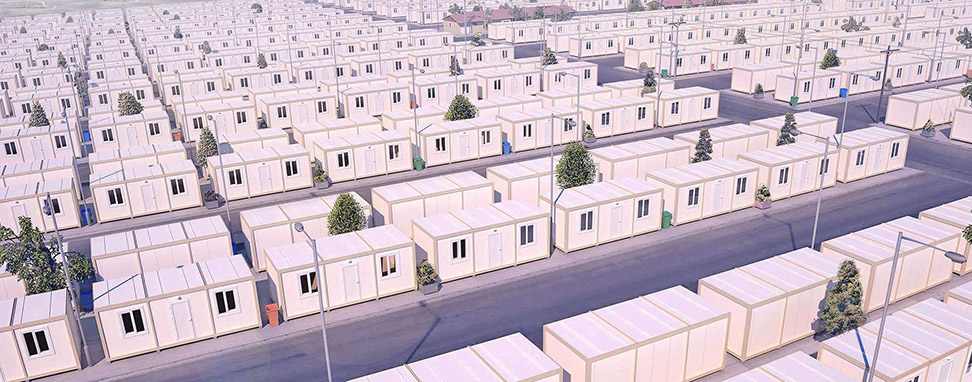The lifespan of a metal container house compared to traditional homes can vary depending on several factors, including construction quality, maintenance, environmental conditions, and structural integrity. Here's a comparison of the lifespan of metal container houses and traditional homes:
Metal Container Houses:
Typical Lifespan: Metal containers are designed to withstand the rigors of international shipping for around 10 to 20 years.
Adaptability: With proper maintenance and reinforcement, metal container houses can last much longer than their initial intended lifespan.
Maintenance Requirements: Metal containers require minimal maintenance compared to traditional homes, but regular inspections and repairs are necessary to address rust, corrosion, and structural issues.
Environmental Factors: Metal containers are susceptible to rust and corrosion in humid or coastal environments, which can reduce their lifespan if not properly protected.

Structural Modifications: Container houses can be modified and expanded over time, offering flexibility and adaptability to changing needs.
Insulation and Climate Control: Proper insulation and climate control measures are essential to prolong the lifespan of metal container houses by preventing moisture buildup and rust.
Traditional Homes:
Typical Lifespan: Traditional homes constructed with wood framing, brick, or concrete can have lifespans ranging from 50 to over 100 years, depending on construction materials, quality, and maintenance.
Maintenance Requirements: Traditional homes require regular maintenance, including painting, roofing repairs, plumbing, and electrical maintenance, to preserve their structural integrity and appearance.
Environmental Factors: Traditional homes may be more resilient to environmental factors such as humidity, moisture, and pests compared to metal containers, depending on construction materials and methods.
Adaptability: While traditional homes can be renovated and remodeled, structural modifications may be more complex and costly compared to container houses.
Energy Efficiency: Upgrading insulation, windows, and HVAC systems can improve energy efficiency and prolong the lifespan of traditional homes by reducing wear and tear on structural components.
Summary:
Metal container houses generally have a shorter initial lifespan compared to traditional homes due to their intended use in shipping.
With proper maintenance and reinforcement, metal container houses can last for several decades or longer.
Traditional homes have longer lifespans on average and may offer better resilience to environmental factors and greater adaptability for renovations and modifications.
Both metal container houses and traditional homes require regular maintenance to ensure structural integrity and longevity.
In conclusion, while traditional homes typically have longer lifespans, metal container houses can be viable long-term housing solutions with proper maintenance, reinforcement, and climate control measures.








